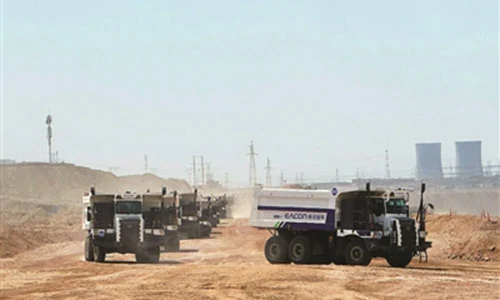At present, open-pit coal mines are undergoing an unmanned and intelligent transformation. How to ensure the production safety and efficiency of coal mines while quickly introducing unmanned driving technology has become an issue of concern in the industry.
According to statistics from the China Coal Industry Association, there are currently about 360 open-pit coal mines in my country, including 36 large-scale open-pit coal mines with a capacity of tens of millions of tons, mainly concentrated in Inner Mongolia, Xinjiang and Shanxi. The transformation to less-manned and intelligent operation is a new trend in the development of open-pit coal mines.
In 2023, the “Regulations on the Limitation of the Number of People Entering the Mine (Pit) in a Single Shift in Coal Mines” issued by the State Administration of Mine Safety Supervision clearly stated that the number of people entering the pit for a single mine with a production capacity of more than 30 million tons should be less than 850. However, data shows that in 2021, there were more than 800 vehicles in a certain large open-pit coal mine during the peak period of stripping, and the number of people working in the pit in a single shift exceeded 1,000. Therefore, autonomous driving has a large space for utilization in open-pit coal mines.
The report released by E-IO Intelligence pointed out that in recent years, the autonomous driving technology of mines has become increasingly mature, the safety of autonomous driving technology in mines has been verified, and a relatively mature business model has gradually been formed. At present, autonomous driving technology is mainly used in open-pit mining areas, with a high degree of openness and low route complexity. Autonomous driving mining trucks and wide-body vehicles are the main landing models for the scene, which are used to realize earthwork stripping and transportation functions.
“Originally, 110 to 120 people were needed within a 300-meter working line, including excavator drivers, transport vehicles and other auxiliary equipment. According to relevant requirements, within the 300-meter working line, the number of people working in a single shift on all steps from top to bottom should not exceed 29, which provides a lot of room for the introduction of unmanned driving.” The person in charge of the mine truck said that the shortage of personnel is also forcing mines to introduce unmanned technology. “Most open-pit coal mines are in remote areas, and the living and working environment is relatively poor. Two drivers take turns to drive a mining truck, and the work content is mechanical, so it is difficult to recruit new people.”

It is understood that at present, Tianchi Energy South Open-pit Coal Mine, Baorishile Coal Mine and Zhundong Open-pit Coal Mine and other coal mines have introduced unmanned driving and realized the operation without safety officers. In the future, more unmanned driving manufacturers will enter the open-pit coal mines in Xinjiang and Inner Mongolia. However, although many mines have introduced unmanned driving, it takes two months or even half a year of testing and verification to achieve complete unmanned operation, and some mines have not been able to achieve unmanned operation for a long time. “If the unmanned driving capability is insufficient, the driver can only be retained as a transition. The slow advancement of unmanned operation will make it difficult for the owner and will also put the management team under great pressure.” He also said that the proportion of unmanned driving in many mines is still low, and manual operation is still required when the unmanned driving capability is insufficient.

The report of iResearch points out that the smart mine autonomous driving industry is still in its initial development stage, and enterprises in the industry generally show the characteristics of “superior technical strength and slightly inferior commercial capabilities”. It is not a one-day job to achieve large-scale commercialization. The commercialization capability based on solid technical product capabilities will become the most prominent investment value point of enterprises.
In addition, studies have shown that from 2014 to 2023, the number of open-pit coal mines in China has decreased by 72. In comparison, the number of overseas open-pit coal mines is larger and the market prospects are broader. As China’s open-pit coal mine autonomous driving solutions become more mature, “going overseas” may become a new growth point for China’s mine autonomous driving technology.


